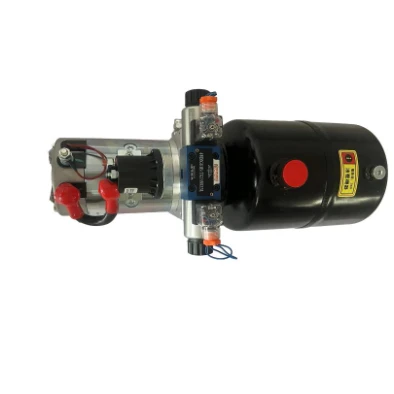Nov . 20, 2024 20:15 Back to list
car lift power unit product
Understanding Car Lift Power Units An Essential Guide
In the world of automotive repair and maintenance, efficiency and safety are paramount. One of the essential tools that contribute to both these factors is the car lift. Within this category, power units play a critical role in the operation and performance of car lifts. This article explores the significance of car lift power units, their components, and their applications, providing a comprehensive overview for both automotive professionals and enthusiasts.
What is a Car Lift Power Unit?
A car lift power unit is a hydraulic or electric device responsible for lifting heavy vehicles safely and efficiently. It provides the necessary power to raise and lower the lift mechanism, allowing for easy access to the undercarriage of a vehicle. The importance of a reliable power unit cannot be understated; it ensures that the lift operates smoothly, reducing the risk of accidents and damage to the vehicle.
Key Components of a Car Lift Power Unit
1. Pump The heart of the power unit, the pump generates the hydraulic pressure required to lift the vehicle. There are different types of pumps, including gear, piston, and diaphragm pumps, each suitable for specific applications. The choice of pump impacts the performance and reliability of the lift.
2. Motor The motor powers the pump, converting electrical energy into mechanical energy. Depending on the model, a power unit may use either an AC or DC motor, affecting its efficiency and speed. Motors should be selected based on the required lifting capacity and duty cycle.
3. Hydraulic Fluid This fluid is essential for transmitting power within the system. It is crucial to use the correct type of hydraulic fluid, as it affects the performance, efficiency, and lifespan of the power unit. Regular maintenance and checks ensure that the fluid remains free of contaminants and is at the proper level.
4. Control Valve The control valve regulates the flow of hydraulic fluid, allowing the operator to lift or lower the vehicle smoothly. These valves can be manual or electrically controlled, providing flexibility based on user preference and safety needs.
5. Reservoir The reservoir holds the hydraulic fluid. It must be adequately sized to accommodate the fluid necessary for lifting heavier vehicles. Additionally, reservoirs are designed to allow for expansion and contraction of the hydraulic fluid as temperature changes.
Types of Car Lift Power Units
car lift power unit product

Car lift power units can be categorized based on their power source and design
1. Hydraulic Power Units These are the most common type of power unit used in car lifts. They utilize hydraulic fluid to create the necessary lifting force. Hydraulic power units are known for their reliability and capability to lift heavy loads, making them ideal for professional garages and auto repair shops.
2. Electric Power Units Electric power units are designed for lighter applications. They are often incorporated into smaller or portable car lifts, offering convenience and ease of use. While they may not have the same lifting capacity as hydraulic units, electric models are becoming increasingly popular for their simplicity and low maintenance.
3. Pneumatic Power Units Although less common in automotive applications, pneumatic power units use compressed air to operate lifts. They are typically found in specialized environments, such as body shops or environments where hydraulic fluid spills could pose a hazard.
Application and Importance
Car lift power units are indispensable in various automotive settings, including
- Repair Shops Professionals rely on power units to lift vehicles for routine inspections, repairs, and maintenance tasks. A reliable lift enhances workflow efficiency and minimizes downtime. - Dealerships Car dealerships use power units to demonstrate vehicles and perform maintenance on the lot. Lifts improve customer experience by showcasing the vehicle’s undercarriage and overall condition.
- DIY Enthusiasts Hobbyists and DIY mechanics utilize car lifts for personal projects. Investing in a reliable power unit can significantly enhance the ability to work on vehicles safely and effectively.
Conclusion
Understanding the functions and components of car lift power units is essential for anyone involved in automotive repair and maintenance. Whether you are a professional mechanic or a car enthusiast, having a reliable power unit ensures that lifting vehicles is performed safely and efficiently. As technology advances, the options available for car lift power units will continue to evolve, offering even greater performance and reliability for users across the automotive industry.
-
Efficient & Reliable Double Acting Power Unit | Hydraulic Solutions
NewsAug.23,2025
-
1.5 Ton Turbocharged Cylinder 80/95-40/60-35-124 | High Performance
NewsAug.22,2025
-
High-Performance Fork Lift Hydraulic Power Units
NewsAug.21,2025
-
High-Quality Set of 50/60-45-290 471 - Precision Parts
NewsAug.19,2025
-
1.5 Ton Lifting Cylinder-Hebei Shenghan|Heavy-Duty Lifting, Precision Engineering
NewsAug.18,2025
-
1.5 Ton Lifting Cylinder-Hebei Shenghan|Precision Hydraulic Solutions&Industrial Lifting
NewsAug.18,2025
